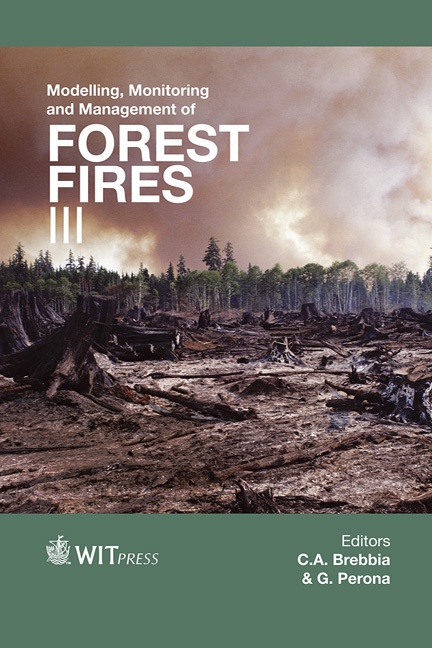Experimental Determination Of Volatile Organic Compounds Emitted By Thymus Vulgaris
Price
Free (open access)
Transaction
Volume
158
Pages
10
Page Range
189 - 198
Published
2012
Size
451 kb
Paper DOI
10.2495/FIVA120161
Copyright
WIT Press
Author(s)
K. Chetehouna, L. Courty, L. Lemée, J. P. Garo & P. Gillard
Abstract
Thymus vulgaris is a common Mediterranean vegetal species often involved in forest fires. The aim of this work is to characterize the VOCs emitted by the needles of this plant as functions of temperature. Experiments are performed using a flash pyrolysis apparatus. The influence of two parameters, namely the heating time and heating rate are studied: the highest VOCs’ emissions are found for a heating time of 30 s at 5000 K/s. Two major compounds are identified for all the temperatures, thymol and p-cymene. The total amount of VOCs emitted increases with temperature and except for the three lowest temperatures, thymol represents more than 50% of the gas mixture. Results are compared to literature available data and to the emissions behaviour of other vegetal species. Keywords: Thymus vulgaris, VOCs emission, flash pyrolysis, forest fires. 1 Introduction Vegetation is the engine of combustion in forest fires and its characterization is important to accurately modelling fires propagation. Before the pyrolysis temperature, many Volatile Organic Compounds (VOCs) are emitted by most of the vegetal species. These VOCs are mostly monoterpenes (C10H16) and sesquiterpenes (C15H24) and they have very low values of lower flammability limits, namely less than 1% vol. in air [1]. For this reason, they are much more flammable than typical pyrolysis products (CO, CH4, etc.) and they should be taken into account for the characterization of vegetation. We can find several
Keywords
Thymus vulgaris, VOCs emission, flash pyrolysis, forest fires.





